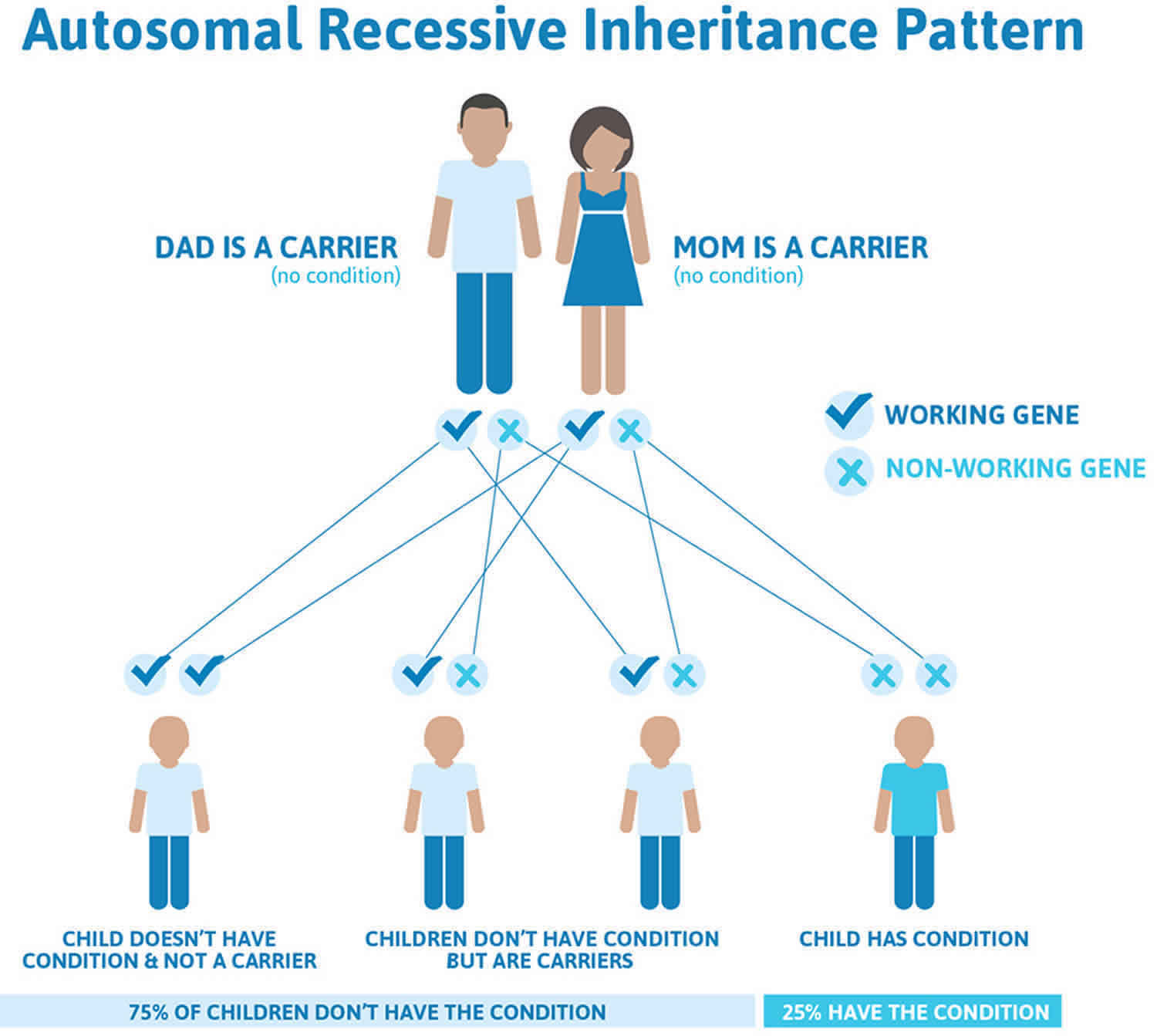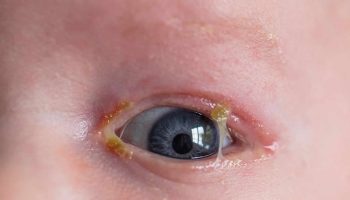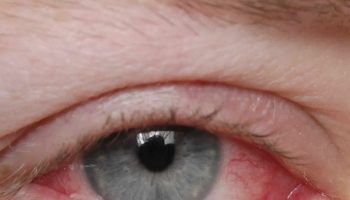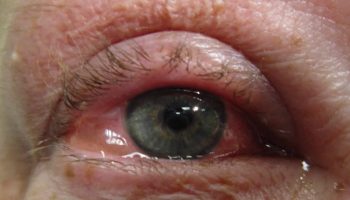Meckel Gruber syndrome
Meckel-Gruber syndrome also known as Meckel syndrome, is a rare, lethal disorder with severe signs and symptoms that affect many parts of the body. The most common features are enlarged kidneys with numerous fluid-filled cysts; an occipital encephalocele, which is a sac-like protrusion of the brain through an opening at the back of the skull; and the presence of extra fingers and toes (polydactyly). Most affected individuals also have a buildup of scar tissue (fibrosis) in the liver. Because of these serious health problems, most infants with Meckel syndrome do not survive for long after birth.
Other signs and symptoms of Meckel Gruber syndrome vary widely among affected individuals. Numerous abnormalities of the brain and spinal cord (central nervous system) have been reported in people with Meckel syndrome, including a group of birth defects known as neural tube defects. These defects occur when a structure called the neural tube, a layer of cells that ultimately develops into the brain and spinal cord, fails to close completely during the first few weeks of embryonic development. Meckel syndrome can also cause problems with development of the eyes and other facial features, heart, bones, urinary system, and genitalia.
Because of their serious health problems, most individuals with Meckel Gruber syndrome die before or shortly after birth. Pulmonary hypoplasia is the leading cause of death. Improvements in ultrasonography have enabled prenatal diagnosis as early as 10 weeks’ gestation 1. Most often, affected infants die of respiratory problems or kidney failure. Cardiac repair or neurosurgical intervention for encephalocele may be warranted in patients with Meckel-Gruber syndrome.
Meckel syndrome is inherited as an autosomal recessive condition through thirteen genes: B9D1, B9D2, CC2D2A, CEP290, MKS1, RPGRIP1L, TCTN2, TCTN3, TMEM67, TMEM107, TMEM216, TMEM231 and TMEM237. Mutations in these 13 genes account for 75 percent of all cases; the remaining 25 percent have unknown genetic causes. Most of these genes are also responsible for a neurological disorder called Joubert syndrome, leading to the concept that Meckel syndrome is the extreme lethal form of Joubert syndrome.
Meckel Gruber syndrome affects 1 in 13,250 to 1 in 140,000 people worldwide 2. It is more common in certain populations; for example, the condition affects about 1 in 9,000 people of Finnish ancestry and about 1 in 3,000 people of Belgian ancestry. However, Gujarati Indians have a prevalence of 1 in 1,300. It often occurs in the context of consanguineous unions 3.
Meckel Gruber syndrome causes
Meckel Gruber syndrome can be caused by mutations in thirteen genes: B9D1, B9D2, CC2D2A, CEP290, MKS1, RPGRIP1L, TCTN2, TCTN3, TMEM67, TMEM107, TMEM216, TMEM231 and TMEM237. Mutations in these 13 genes account for 75 percent of all cases; the remaining 25 percent have unknown genetic causes. Mutations in several other genes have been identified in people with features similar to those of Meckel Gruber syndrome, although it is unclear whether these individuals actually have Meckel Gruber syndrome or a related disorder (often described as a “Meckel-like phenotype”). Most of these genes are also responsible for a neurological disorder called Joubert syndrome, leading to the concept that Meckel syndrome is the extreme lethal form of Joubert syndrome. The proteins produced from these genes are known or suspected to play roles in cell structures called cilia. Cilia are microscopic, finger-like projections that stick out from the surface of cells and are involved in signaling pathways that transmit information between cells. Cilia are important for the structure and function of many types of cells, including brain cells and certain cells in the kidneys and liver.
Mutations in the genes associated with Meckel Gruber syndrome lead to problems with the structure and function of cilia. Defects in these cell structures probably disrupt important chemical signaling pathways during early development. Although researchers believe that defective cilia are responsible for most of the features of this disorder, it remains unclear how they lead to specific developmental abnormalities of the brain, kidneys, and other parts of the body.
Meckel Gruber syndrome inheritance pattern
Meckel Gruber syndrome is inherited in an autosomal recessive pattern, which means both copies of the gene in each cell have mutations. The parents of an individual with an autosomal recessive condition each carry one copy of the mutated gene, but they typically do not show signs and symptoms of the condition.
It is rare to see any history of autosomal recessive conditions within a family because if someone is a carrier for one of these conditions, they would have to have a child with someone who is also a carrier for the same condition. Autosomal recessive conditions are individually pretty rare, so the chance that you and your partner are carriers for the same recessive genetic condition are likely low. Even if both partners are a carrier for the same condition, there is only a 25% chance that they will both pass down the non-working copy of the gene to the baby, thus causing a genetic condition. This chance is the same with each pregnancy, no matter how many children they have with or without the condition.
- If both partners are carriers of the same abnormal gene, they may pass on either their normal gene or their abnormal gene to their child. This occurs randomly.
- Each child of parents who both carry the same abnormal gene therefore has a 25% (1 in 4) chance of inheriting a abnormal gene from both parents and being affected by the condition.
- This also means that there is a 75% ( 3 in 4) chance that a child will not be affected by the condition. This chance remains the same in every pregnancy and is the same for boys or girls.
- There is also a 50% (2 in 4) chance that the child will inherit just one copy of the abnormal gene from a parent. If this happens, then they will be healthy carriers like their parents.
- Lastly, there is a 25% (1 in 4) chance that the child will inherit both normal copies of the gene. In this case the child will not have the condition, and will not be a carrier.
These possible outcomes occur randomly. The chance remains the same in every pregnancy and is the same for boys and girls.
Figure 1 illustrates autosomal recessive inheritance. The example below shows what happens when both dad and mum is a carrier of the abnormal gene, there is only a 25% chance that they will both pass down the abnormal gene to the baby, thus causing a genetic condition.
Figure 1. Meckel Gruber syndrome autosomal recessive inheritance pattern
People with specific questions about genetic risks or genetic testing for themselves or family members should speak with a genetics professional.
Resources for locating a genetics professional in your community are available online:
- The National Society of Genetic Counselors (https://www.findageneticcounselor.com/) offers a searchable directory of genetic counselors in the United States and Canada. You can search by location, name, area of practice/specialization, and/or ZIP Code.
- The American Board of Genetic Counseling (https://www.abgc.net/about-genetic-counseling/find-a-certified-counselor/) provides a searchable directory of certified genetic counselors worldwide. You can search by practice area, name, organization, or location.
- The Canadian Association of Genetic Counselors (https://www.cagc-accg.ca/index.php?page=225) has a searchable directory of genetic counselors in Canada. You can search by name, distance from an address, province, or services.
- The American College of Medical Genetics and Genomics (http://www.acmg.net/ACMG/Genetic_Services_Directory_Search.aspx) has a searchable database of medical genetics clinic services in the United States.
Meckel Gruber syndrome symptoms
The specific symptoms associated with Meckel Gruber syndrome vary greatly from one individual to another. Affected children will not have all of the symptoms detailed below. Central nervous system, pulmonary or kidney abnormalities always result in perinatal death.
The most common central nervous system abnormality associated with Meckel Gruber syndrome is occipital encephalocele, a condition in which an infant is born with a gap in the skull (i.e., a part of one or more of the plates that form the skull does not seal). The membranes that cover the brain (meninges) and brain tissue often protrude through this gap. Occipital encephalocele may result in accumulation of excessive cerebrospinal fluid (CSF) in the skull, which causes pressure on the tissues of the brain (hydrocephaly). Additional central nervous system abnormalities that may occur in infants with Meckel Gruber syndrome include the absence of a major portion of the brain, skull, and scalp (anencephaly), Dandy-Walker malformation, and a condition known as microcephaly, in which the head circumference is smaller than would be expected for age and sex.
Affected infants may have distinctive facial features including an abnormally small jaw (micrognathia); enlarged, low-set and malformed ears; cleft palate; cleft lip; sloping forehead; and short neck. Affected children may have eye (ocular) abnormalities including abnormally small eyes (microphthalmia), and underdevelopment of the nerves of the eyes (optic nerve hypoplasia or coloboma). Multiple cysts on the kidneys (polycystic kidneys) are the most common symptom associated with Meckel Gruber syndrome. The condition is characterized by normal kidney tissue that is replaced by fluid-filled sacs or cysts of varying sizes that become larger (10-20 times greater than normal) as the disease progresses. Findings associated with polycystic kidneys include loss of kidney function, leading to end-stage renal failure. Improper kidney function may also result in a reduction in the amount of amniotic fluid surrounding the developing fetus (oligohydramnios).
Affected individuals may also have extra fingers and toes, most often extra fingers on the “pinky” side of the hands (postaxial polydactyly). Additional skeletal malformations include bowing of the long bones of the arms and legs, curvature of the fifth fingers (clinodactyly), webbing of the fingers and toes (syndactyly), and club foot where the foot are rotated internally (talipes equinovarus).
In some individuals, abnormalities of the genitourinary tract may be present including failure of the one or both testes to descend into the scrotum (cryptorchidism), underdeveloped (hypoplastic) bladder, and incomplete development of genitalia.
Some affected infants may have abnormalities affecting other organs of the body including the liver, lungs or heart. The liver may be abnormally enlarged (hepatomegaly) with multiple cysts and excessive fibrous tissue (fibrosis). Widening (dilatation) and fibrosis of the passages that carry bile from the liver to the small intestines (bile ducts) may also occur. The lungs may be underdeveloped (hypoplastic) and the structure that covers the entrance of the larynx when swallowing may be clefted (cleft epiglottis). The spleen may be abnormally enlarged (splenomegaly) or missing (asplenia).
Heart abnormalities may include atrial septal defect (ASD) and ventricular septal defect (VSD) and patent ductus arteriosus (PDA). ASDs (atrial septal defects) are characterized by an abnormal opening in the fibrous partition (septum) that separates the two upper chambers (atria) of the heart. VSDs (ventricular septal defects) are characterized by an abnormal opening in the septum that divides the heart’s two lower chambers (ventricles). The size, location, and nature of a septal defect and any associated abnormalities determine the severity of symptoms. Patent ductus arteriosus is a condition in which the passage (ductus) between the blood vessel that leads to the lungs (pulmonary artery) and the major artery of the body (aorta) fails to close after birth.
A study by Barisic et al 4, using data from 191 cases of Meckel-Gruber syndrome, as accessed through the European Surveillance of Congenital Anomalies network, found the prevalence of various characteristics of Meckel-Gruber syndrome to be as follows:
- Cystic kidneys (97.7%)
- Polydactyly (87.3%)
- Encephalocele (83.8%)
- Fibrotic/cystic changes of the liver (65.5%, as identified via postmortem examination)
- Other CNS anomalies (51.4%)
- Orofacial clefts (31.8%)
Meckel Gruber syndrome diagnosis
Prenatal ultrasonography is currently the best method available to diagnose Meckel-Gruber syndrome and is available in 2-dimensional (2D), 3-dimensional (3D), and 4-dimensional (4D) modalities. The brain abnormalitiy called occipital encephalocele can often be seen starting late in the first trimester. Large cysts on the kidneys can also be seen on an ultrasound, although if there is too little amniotic fluid (oligohydramnios) it make it difficult to detect problems with the kidneys. Experienced ultrasonographers may be able to detect the presence of extra fingers or toes (polydactyly) in the second trimester if oligohydramnios is not present 5.
Molecular genetic testing can be used to confirm the diagnosis and guide genetic counseling.
Magnetic resonance imaging (MRI) is a valuable complement to ultrasonography in assessing fetal anomalies in the presence of severe oligohydramnios. It is mainly used when ultrasonography findings are inconclusive or are insufficient to guide treatment choices.
Chromosome analysis is essential to exclude trisomy 13, which Meckel-Gruber syndrome mimics.
If anomalies are detected early in the first trimester, chorionic villus sampling (CVS) can be performed at 10-12 weeks’ gestation or later in pregnancy if oligohydramnios does not permit amniocentesis. Amniocentesis is performed after 14 weeks’ gestation if an adequate fluid pocket is present.
Meckel Gruber syndrome treatment
No curative treatment is currently available for Meckel Gruber syndrome which has a constantly fatal outcome due to renal failure and lung hypoplasia. Treatment is symptomatic and supportive.
Genetic counseling may be of benefit for affected individuals and their families.
Meckel Gruber syndrome prognosis
Most fetuses affected with Meckel syndrome die before birth due to a lack of amniotic fluid surrounding the fetus (oligohydramnios) or incomplete development of the lungs (pulmonary hypoplasia). Because of these serious health problems, infants that are born do not survive longer than a few days or weeks. Most affected infants die of kidney failure or respiratory problems.
- Hartill V, Szymanska K, Sharif SM, Wheway G, Johnson CA. Meckel-Gruber Syndrome: An Update on Diagnosis, Clinical Management, and Research Advances. Front Pediatr. 2017. 5:244.[↩]
- Meckel syndrome. https://ghr.nlm.nih.gov/condition/meckel-syndrome[↩]
- Meckel syndrome. https://rarediseases.org/rare-diseases/meckel-syndrome/[↩]
- Barisic I, Boban L, Loane M, et al. Meckel-Gruber Syndrome: a population-based study on prevalence, prenatal diagnosis, clinical features, and survival in Europe. Eur J Hum Genet. 2015 Jun. 23 (6):746-52.[↩]
- Meckel Gruber syndrome. https://emedicine.medscape.com/article/946672-overview[↩]






